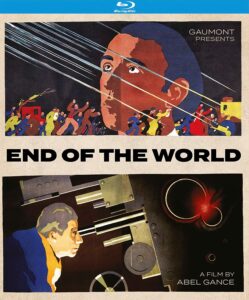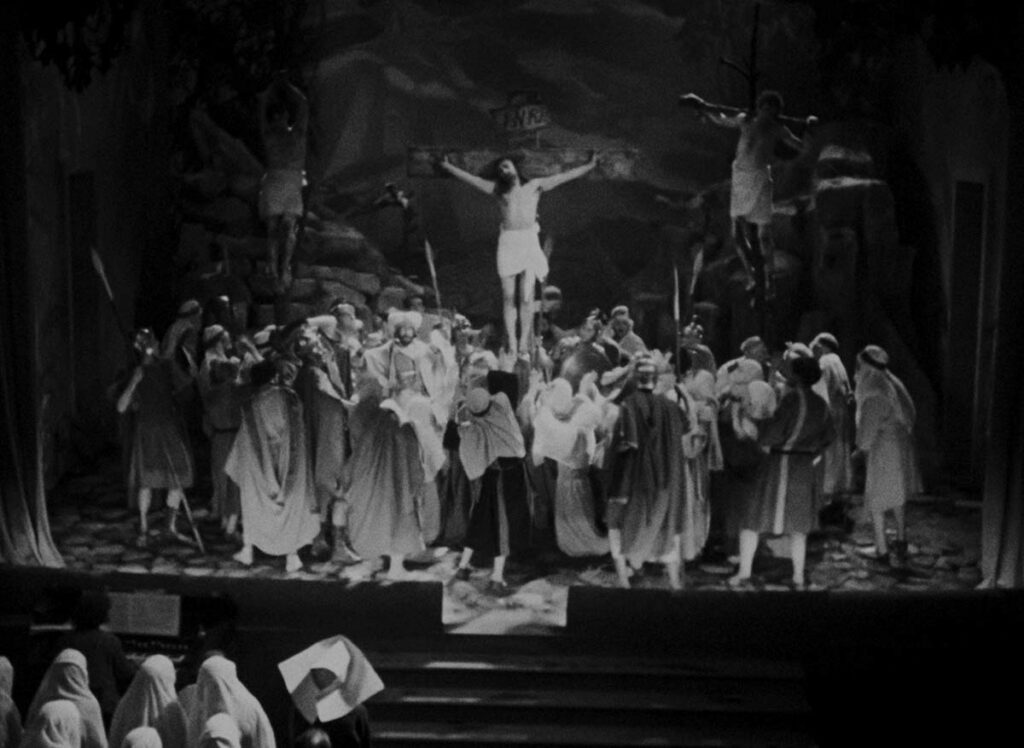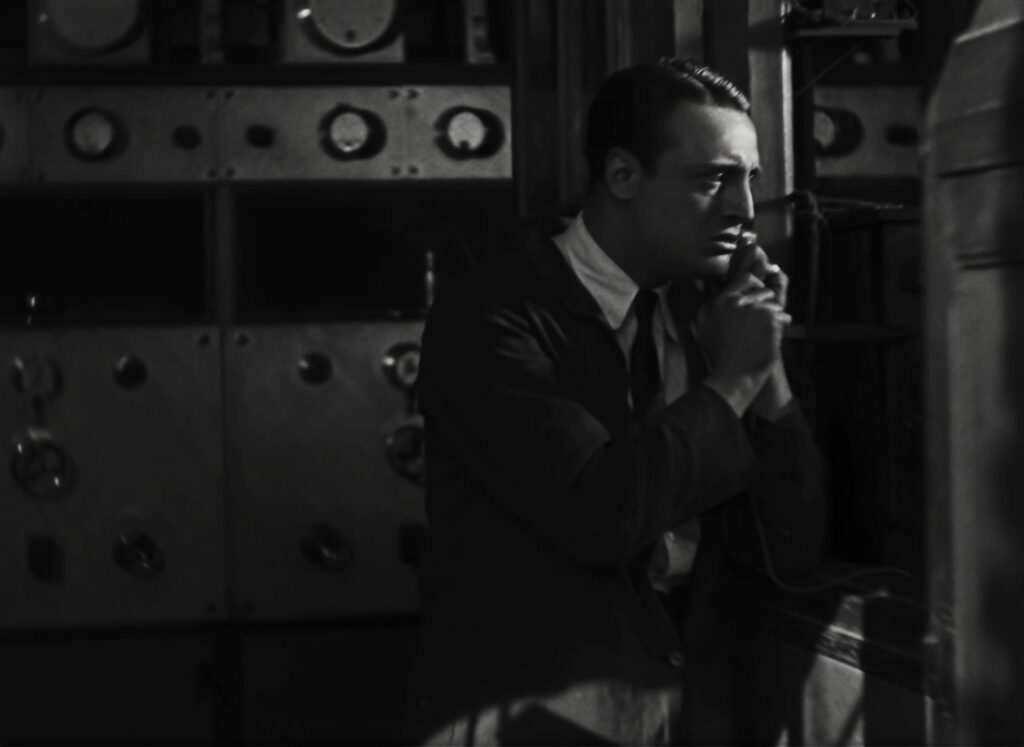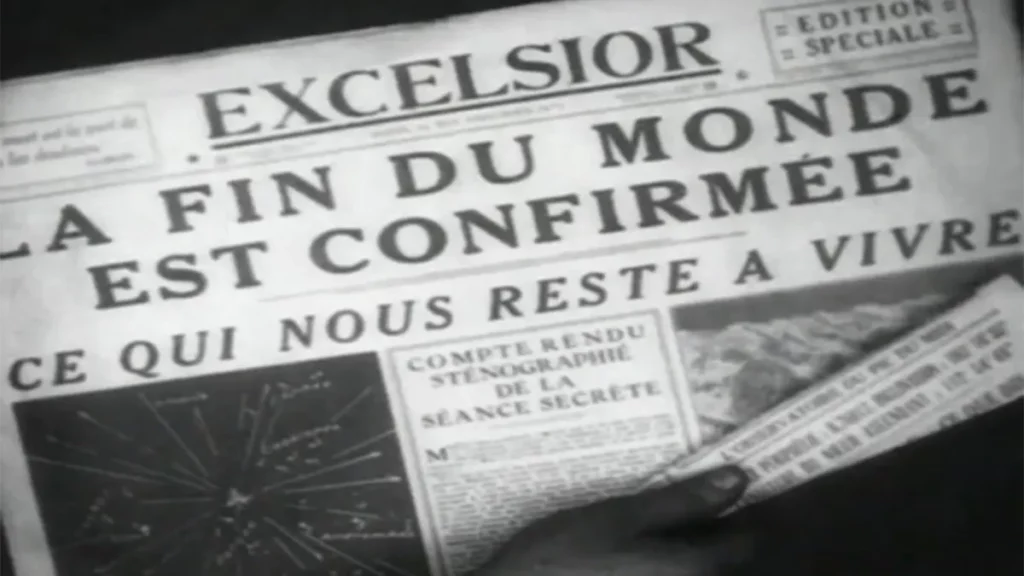Abel Gance faces the Apocalypse in Remarkable early French Talkie
DIRECTED BY ABEL GANCE/FRENCH/1931
BLU-RAY STREET DATE: JULY 18, 2023/KINO CLASSICS

In closeup, we see a classic Roman guard looking out at the packed crowd before him. They, however, are all looking up. Most are weeping. A radiant woman, teary eyed, looking up. Desperately sad men, looking up. Mourning nuns in white, crouched at the foot of the cross, looking up.
If the overwhelming tone of Biblical tragedy isn’t enough, the first shot of the crucified Christ makes all fairly clear. A supernatural haze- the kind you only see in the most elegantly rendered silent films- imbues everyone with the kind of holy glow fitting for a the most dramatically staged Passion Play. And hold on a second…! Playing Christ on the cross is none other than this film’s director, the revered and famously ambitious Abel Gance (he of the unmatched five-and-a-half-hour three-screen epic of 1927, Napoleon)! Huh, what to make of that…?
Finally, a wide shot reveals the scene as the cathedral-bound Passion Play it is. In a modern day (1931), a jaded audience within the vast religious structure takes it in, looking up… at the elevated proscenium. They’re quiet, though this is no silent film. It is, in fact, the End of the World.

Gance, obviously looking to take his craft to the nth degree, has opted to go apocalyptic. While the Biblical analogues to their modern-day (meaning, 1931) characters is largely a lost cause (Jules Dassin’s He Who Must Die [1957] does a far better job of subverting a literal Mary Magdalene surrogate into a martyr), the filmmaker’s employment of cataclysmic spectacle more than redeems any shortcomings.
Primary among said shortcomings is the quality of the film’s tinny, muffled audio. The Kino Classics’ Blu-ray’s only bonus feature (not counting a trailer), a thirty-plus-minute documentary about End of the World entitled On the Trail of a Dream, featuring expert exclamation from Laurent Véray, Serge Bromberg, Christophe Gauthier and Léon Rousseau, gets into the weeds of the issue. Essentially, it comes down to Gance having picked the worst of the competing early synch sound processes. I’ll leave further details to the interviewees, but suffice to say, it was the filmmaker’s decision, and a confounding one at that. Although End of the World (La Fin du monde) stands tall at the very beginning of synch sound cinema in France, there was clear evidence even then that a different choice would’ve been more… sound.

The film itself, while a stunner, is repeatedly called out by the four documentary participants as a deeply flawed and majorly compromised vision. Even as a Gance novice, I understood that End of the World’s 105-minute running time is dramatically brief compared to Gance’s inflated D.W. Griffith-esque aspirations and whatnot. Yet, I found myself fully enthralled by the existential desperation and meteoric destruction on screen. It is discovered that a comet is on a collision course with Earth. Such a collision would presumably mean the end of most life on the planet. The question then becomes, what do we as humans do with our remaining time?
For many, their answer is, don’t look up. They choose to simply not believe it. These are the wealthy and powerful, people who can’t fathom such a blow to their fragile reality of stature and, yes, decadence. Though End of the World seems to sidestep overt political commentary, the fact that the one-percenter’s tuxedos-and-evening-gowns soirée held in society’s final moments degerates into a baseline orgy replete with madness kinda says it all.
Paris is burning, not to mention the rest of the planet. Go figure, scientists and journalists got it right. The public is first informed with this understandably panic-inducing headline (translated here to English): “Appalling forecast: I predict the end of the world”. Indeed, all things must pass- even the mighty movie career of Abel Gance. We’re told by the experts that this would prove to be his final shot at massively extravagant cinematic glory. And even then, it wasn’t at all as envisioned. But as high falutin’ as Gance was posturing, the film itself, as represented on this fine Blu-ray release, urges us not to look back, but to rather look to the future, and also to simply look to the here and now. And, most importantly, to earnestly look up.


